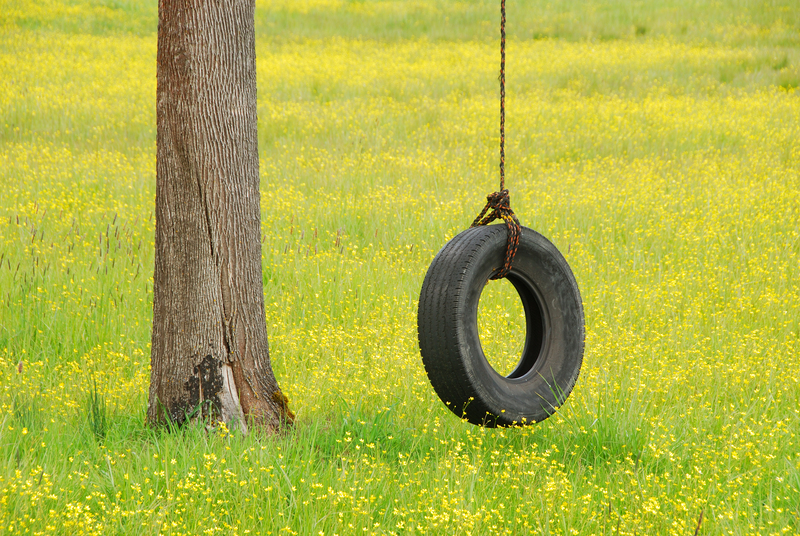Strategies for Reducing Environmental Impact When Disposing of PPE Waste
The surge in personal protective equipment (PPE) usage during the COVID-19 pandemic underscored the critical role these items play in safeguarding public health. However, the proliferation of single-use gloves, masks, gowns, and face shields has significantly burdened the environment. This article explores several effective strategies for reducing the environmental impact when disposing of PPE waste, offering actionable insights for individuals, businesses, and policy-makers aiming to balance safety with sustainability.
Understanding PPE Waste and Its Environmental Challenges
PPE waste management has become a prominent environmental concern. Most PPE products are manufactured from non-biodegradable plastics such as polypropylene and polyethylene, which can persist in the environment for hundreds of years. Improper disposal often results in:
- Landfill overflow
- Soil and water pollution
- Microplastic generation
- Wildlife endangerment
Furthermore, contaminated PPE waste poses risk to waste handlers, making safe disposal a paramount concern. As awareness of these issues grows, companies and institutions are under increasing pressure to implement sustainable PPE disposal strategies.

Encouraging Source Reduction and Reuse of PPE
The most effective way to minimize PPE waste's negative environmental effects is to reduce the volume generated in the first place. Here's how source reduction and PPE reuse can help:
1. Assessing Actual PPE Needs
- Conduct workplace risk assessments to determine precise PPE requirements
- Educate users to avoid unnecessary PPE use
2. Promoting Reusable PPE Solutions
- Invest in high-quality, durable face shields, goggles, and gowns
- Establish effective decontamination protocols for safe reuse
- Provide employee training on proper cleaning and storage
*Switching to reusable PPE where possible dramatically lessens the need for constant replenishment of single-use items, resulting in significantly less waste generation.*
Implementing Effective PPE Waste Segregation
Proper segregation is indispensable for managing the environmental impact of PPE disposal. Separation enables more efficient recycling and reduces contamination risks:
- Dedicated PPE bins: Position clearly labeled bins in strategic locations, separated from general waste.
- Color coding: Adopt standardized color codes (e.g., red for hazardous PPE) to aid waste sorting and management.
- User education: Regularly train staff, patients, and customers on how and where to dispose of used masks and gloves.
Clear segregation ensures that reusable and recyclable PPE are kept from contaminated waste, making subsequent processing safer and simpler.
Exploring PPE Waste Recycling Options
With most conventional PPE made of various plastics, PPE recycling can be challenging but not impossible. These are some of the most promising advances in PPE waste recycling:
- Chemical recycling technologies: Some facilities now employ pyrolysis and hydrothermal methods to break down non-recyclable plastics into usable fuels or new polymers.
- Mechanical recycling initiatives: Specialized programs shred and melt down PPE waste for applications such as park benches and road surfacing.
- Partnerships with manufacturers: Some PPE producers operate "take-back" schemes to recycle used products into new PPE raw materials.
While these technologies are still developing, they offer a sustainable future pathway for diverting huge amounts of PPE waste from landfills and the environment.
Adopting Alternatives: Biodegradable and Compostable PPE
Recent innovations in biodegradable PPE materials present a promising shift for industries aiming to lower the environmental burden of disposable protective gear.
- Masks and gowns fabricated from plant-based fibers like corn starch or bamboo
- Single-use gloves made of compostable natural rubber or other biopolymers
- PLA (polylactic acid) face shields
*Transitioning to biodegradable or compostable PPE can significantly reduce pollution, provided these products are disposed of through proper composting channels, not conventional waste bins.*
Challenges of Biodegradable PPE
- Lack of industrial composting facilities in some regions
- Potentially higher cost compared to traditional PPE
- Education required for correct end-of-life handling
Safe PPE Waste Incineration and Energy Recovery
For contaminated or non-recyclable PPE waste, incineration remains an important disposal method. When performed in regulated facilities with proper emissions controls, it can also contribute to energy recovery efforts, converting waste into electricity or thermal energy.
- High-temperature incinerators (above 850?C) destroy pathogens and minimize toxic emissions
- Waste-to-energy plants generate useful energy by burning PPE with other suitable waste
While incineration isn't perfectly green, it is often safer and more sustainable than landfill disposal, particularly for infectious or hazardous PPE waste.
Improving PPE Waste Collection and Handling Procedures
To make all the above PPE waste reduction strategies effective, robust systems for collecting, storing, and transporting the discarded protective gear are critical. Key points include:
- Regular monitoring: Schedule frequent collection intervals to prevent overflow and reduce contamination.
- Sealed storage: Use leak-proof, lidded containers to minimize environmental release of contaminants.
- PPE for waste handlers: Require workers handling PPE waste to wear suitable protection themselves.
Well-organized systems reduce litter, protect workers, and support overall environmental responsibility.
Implementing Public Education and Awareness Campaigns
A well-informed public is essential for the success of sustainable PPE disposal strategies. Extensive education campaigns can:
- Encourage correct PPE disposal in public spaces, homes, and workplaces
- Raise awareness about the dangers of environmental PPE pollution
- Promote alternative, eco-friendly PPE choices
- Highlight the long-term impact of improper PPE discarding on wildlife and ecosystems
Schools, offices, hospitals, and retail environments should all be targeted with consistent, engaging messaging, such as posters, workshops, and digital platforms.
Supporting and Advocating for Regulatory Measures
Government bodies play a crucial role in instituting policies that reduce the environmental footprint from PPE waste. Advocacy and compliance are key:
- Enforcing mandatory segregation of PPE waste from general refuse streams
- Promoting or subsidizing use of biodegradable PPE
- Funding research into next-gen sustainable PPE technologies
- Bolstering PPE waste reporting and data analysis for informed policymaking
When governments set clear standards and provide incentives, it becomes easier for organizations and individuals to make greener choices in PPE purchasing and disposal.
Case Studies: Successful PPE Waste Reduction Initiatives
Healthcare Facility Reusable PPE Program
A major urban hospital implemented a reusable gown and mask system for staff, with strict laundering and sterilization protocols. Over a year, the facility cut its single-use PPE waste by over 65% and saved thousands on procurement costs, all while maintaining safety standards.
Community-Based Mask Recycling Scheme
A city municipality partnered with PPE manufacturers to install mask collection boxes in public spaces. The collected masks were then processed in specialized plastics recycling centers, diverting tons of waste from local landfills.
Corporate Eco-Innovation with Biodegradable Gloves
A food processing company transitioned from conventional latex gloves to compostable alternatives made from natural rubber. After six months, over 95% of glove waste was successfully composted and used in landscaping, demonstrating closed-loop sustainability.
Best Practices for Sustainable PPE Disposal
To maximize environmental protection while handling PPE waste responsibly, organizations and individuals should adhere to the following best practices:
- Always segregate: Separate used PPE from other waste at the source.
- Opt for reusable where feasible: Favor durable designs for frequent needs.
- Stay informed: Keep up with new PPE recycling and composting options as technologies evolve.
- Engage with local policies: Make use of municipal guidance or facilities for hazardous waste.
- Educate and advocate: Promote sustainable habits in your community and workplace.

Conclusion: Toward a Greener Future in PPE Disposal
Faced with the reality of ongoing PPE use in the healthcare, food, retail, and other sectors, it is vital to adopt robust strategies for reducing the environmental impact of PPE waste. Implementing source reduction, waste segregation, recycling, biodegradable solutions, energy recovery, and public education is essential.
*By striving for continuous improvement and innovation in PPE disposal practices, we can safeguard both public health and the planet. Each small change--from switching to reusable masks to establishing proper disposal bins--contributes to a significant collective impact.*
Let's work together to ensure that our protective measures against disease do not become long-term hazards for our environment.
Frequently Asked Questions
- What are the most environmentally friendly PPE disposal methods?
- Reusable PPE, recycling, and proper composting of biodegradable options are considered most eco-friendly. Incineration with energy recovery is preferable for contaminated PPE.
- Can PPE like masks and gloves be recycled?
- Certain types can be recycled through specialized programs, but most must be cleaned and separated from hazardous waste. Always check local guidelines.
- What role can individuals play in reducing PPE waste impact?
- Individuals can minimize unnecessary use, choose reusables, segregate waste, and support public education campaigns.
- Are biodegradable or compostable PPE products as effective as traditional ones?
- When sourced from reputable manufacturers and used properly, these alternatives can offer equivalent protection for most non-medical settings.
For additional resources and local guidance, contact your municipal waste authority or national environmental agencies on best practices for PPE waste management.